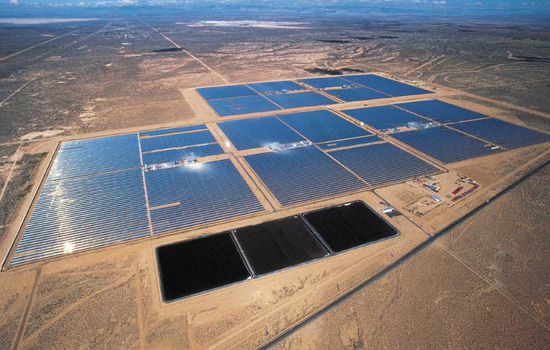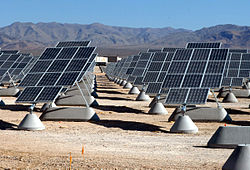Humans evolved over millenia into creatures abled to extract from their environment at least enough to live on and often a lot more. Since we found coal, oil, gas we have been on a sugar high that brought forth machines that now do most work, running on the fossil fuels or derived energy sources. The big connundrum of our times is how to get off that high without killing ourselves.
Downside : We need to save ourselves. Upside : There’s no dilemma
The predicament is easy, if we stay on the high we will kill ourselves, if we quit and do nothing we will end up being killed by our environment (it will turn toxic, long story check the End Permian Extinction). So the only option is to organize a response. The more targeted and smart, the easier it will be. Before we even begin we can calculate what it will take for each of us. Let’s look at what that takes.
One example we found is from Bill Gates, he discusses a formula that describes the dependency between CO2 and four factors. It talks about our CO2 output only of the population :
CO2 = P x S x E x C
P:People
S:Services (food, clothing, heating) we use
E:Energy per service
C:CO2 per unit of energy
The revealing thing about this formula is that (in Bill Gates mind) humans are going to generate a cost in terms of carbon no matter what. This shows you we live in a carbon supported reality, nobody really physically does enough to enable his or her existence. That is what makes the carbon and related credit system so arrogant, and is exacerbated by companies like Monsanto and Syngenta, but we digress.
The question is not how do we minimize CO2, but how do we maximize renewable energy potential
In Bill Gates formula you can bring C to zero easily, especially when you offset energy. But it is a flawed representation of the challenge. We are not able to optimize if we split services and energy and CO2 up. A better formula would simply be :
CO2 = P x CO2
People times net CO2 emitted per person
The net CO2 is the CO2 emitted after you substract any process that absorbs CO2 (mainly growing biomass). This number can be brought to zero and has to turn negative. One way of looking at our situation is saying all humans have a carbon debt if they are descendants of those that burned all the fossil reserves, to act to repay those debts. That would however create an unnecessary undercaste while technology and alternative practices (for instance in agriculture) can bring wealth to all people and recapture carbon. That is : Once everyone is committed to improving things for humanity (or sufficient numbers have found a safe space to do so).
Besides, why pick a metric that we need to minimize, that is analogous to fearing it’s existence. We want to maximize something, so we can worship it and love it.
In real terms a more interesting thing to know is how much renewable energy one person can enable. So how many people do we need to create a wind turbine, solar panel, solar thermal power plant, a ton of biomass. Because then we know that if we allow a certain number of people to use resources, we will get a certain amount of resource generation capacity back (energy). Like in an army where you have a tank unit with 4 men, or a sniper team of 2 men, or a hospital tent with numbers of surgeons and nurses. This type of thinking can result in an accurate strategy to decarbonize a region. If you want to really optimize the roll out of renewables this is the way to go. Just like France roled out one standard 3 kW solar pv system all over the country to make up for lagging in the adoption of the technology.
Wealth is a result of three factors : Skills, Raw materials and Energy
(skills do not necessarily have to be human)
So one way of looking at things is wondering what the renewable production potential is of a group of people. In a formula you could say:
Ep = P x E x D x R X Rp
Ep : Renewable Energy Capacity/Year (for a region
This includes all types of energy, also biomass for food)
P:Number of people
E:Education/Skill level
D:Demographics
R:Raw materials
Rp:Renewable energy potential of the region
This metric can be divided per age group, per technology, per region. Deserts in Morocco have mad solar potential, but there’s nobody there. You’d have to import them, educate them, mix them culturally and set them to task. If there is a population you may find the region lacks required raw materials, or the ability to produce them.
Would you accept a less than perfect option, if it would bring you wealth and secure the future?
The big joker in this game is robotics, automation, machines, technology. We believe we can build without cement, we hope to show more of that this summer. We know robots are capable of running on renewables and do work in remote areas, quicker and without increasing the human footprint. Drones show us remote robotics can be done.
But automated factories for all kinds of potentially helpfull products can give a huge boost to the energy potential of regions. So a better formula is
Ep = P x E x D x R X Rp x T
T Technology, robotics, cybernetics, remote control
The Ep times the number of years it is increased results in the energy a region produces each year, and that energy can be used to feed the population, capture CO2 or exist as ecorestoration. So there’s afinal touch that may confuse people and that is
Ep(n+1) = P x E x D x R X Rp x T X Ep(n)
This is the general insight at the heart of roboeconomics
The renewable energy potential that can be harvested increases the ability of people to produce renewable energy harvesting devices. As long as there is renewable potential that is unused one can bring it online using the available renewable energy. Because of the need to lower the carbon concentration in our atmosphere there is no reason to not maximize until we feel safe again.
Technically there is no reason we can’t fix the problem, we can do it or we can let the sun do it without us
To give an idea of how easy this can be for certain regions with highly educated people, lots of resources and sophisticated and automated building practices let’s just repeat that the US can produce 7 times its current electricity need using only suitable unused federal land. The oceans have vast regions with excellent sun, wind and wave energy, nutrients and water.
We need innovation, but when we’ve got solutions we need people capable of doing the work, many of them
We’d like to know about other models of how to deal with climate change in terms of organizing the response proactively. Let us know about your ideas here : info@greencheck.nl





